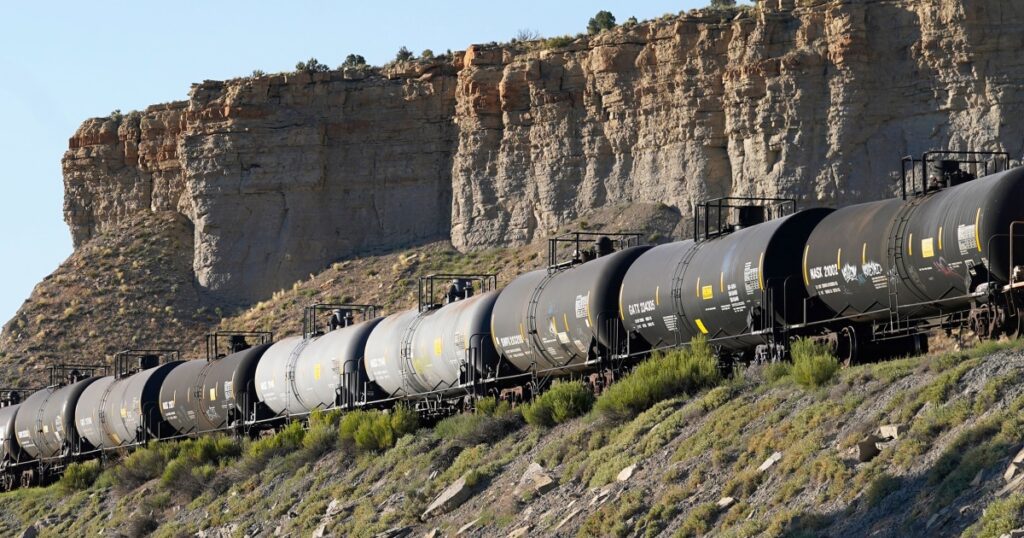Supreme Court Ruling Bolsters Railroad Project Amid Environmental Debate
Legal Victory for Industry Interests Over Environmental Concerns
In a significant decision, the U.S. Supreme Court has delivered a major win for industrial stakeholders opposing stringent environmental regulations. The ruling favors the approval of an 88-mile rail line designed to facilitate the transportation of oil from Utah’s Uinta Basin, a region increasingly scrutinized for its environmental impact.
Key Aspects of the Court’s Decision
The court’s unanimous verdict sided with the Seven County Infrastructure Coalition, a consortium of counties supporting the project. The justices determined that the federal environmental review process, mandated by the National Environmental Policy Act (NEPA), does not need to account for all potential indirect or downstream effects of such infrastructure projects. This interpretation narrows the scope of environmental assessments, potentially expediting project approvals.
While the majority opinion was unanimous, the reasoning diverged among the justices, with liberal members expressing reservations about the implications. Notably, Justice Neil Gorsuch abstained from participating in the case, citing ethical considerations related to his previous associations.
Implications for Environmental Oversight and Infrastructure Development
The ruling clarifies that under NEPA, agencies are not required to evaluate the broader, long-term impacts of projects beyond their immediate scope. Justice Brett Kavanaugh emphasized that this legal framework has been misapplied in recent years, transforming from a procedural safeguard into a tool used by opponents to delay or block infrastructure initiatives.
Kavanaugh criticized how some courts have allowed environmental reviews to become lengthy and costly, often resulting in project delays that can span years or even decades. He warned that such delays not only hinder economic growth but also inflate project costs, ultimately discouraging development altogether.
Environmental Groups’ Response and Ongoing Review Processes
Environmental organizations, which challenged the railroad’s approval, expressed disappointment with the decision. Sam Sankar of Earthjustice argued that the ruling undermines established legal standards that require federal agencies to thoroughly assess potential environmental harms before proceeding.
Despite the Supreme Court’s decision, the project still faces additional scrutiny. It must undergo further review by the Federal Surface Transportation Board, which will evaluate environmental and safety considerations before granting final approval.
Project Details and Regional Impact
The proposed rail line aims to connect the Uinta Basin’s oil fields to the national rail network, promising safer and more efficient transportation options. Keith Heaton, director of the coalition, highlighted the project’s potential to foster economic stability and attract investment to rural Utah, emphasizing its role in modernizing regional infrastructure.
Opposition primarily comes from Eagle County, Colorado, along with various environmental groups. Critics argue that the project could have adverse downstream effects, particularly on water resources and ecosystems along the Colorado River. Legal representatives from Eagle County contend that the project’s impact on local communities warrants more comprehensive environmental review.
Legal and Regulatory Context
The controversy surrounding the project is part of a broader debate over NEPA’s role in infrastructure development. Critics argue that the law’s procedural requirements have become obstacles to progress, prompting recent efforts to streamline the process. In 2023, President Joe Biden signed new regulations that limit environmental reviews to “reasonably foreseeable” impacts and cap report lengths at 150 pages, aiming to balance environmental protection with economic needs.
Notable Legal Developments and Ethical Considerations
Justice Gorsuch’s decision to recuse himself from the case drew attention, given his previous connections to billionaire Philip Anschutz, a major investor in oil and gas ventures. Anschutz Exploration Corp., one of Anschutz’s firms, filed a brief supporting the coalition, raising questions about potential conflicts of interest.
Looking Ahead
While the Supreme Court’s ruling marks a pivotal moment in environmental law and infrastructure policy, the project’s future remains uncertain. The additional federal review process will determine whether the railroad can proceed, balancing economic benefits against environmental safeguards. As infrastructure projects continue to face legal and political challenges, this case underscores the ongoing tension between development and environmental stewardship in the United States.
By Lawrence Hurley, Senior Supreme Court Correspondent for NBC News

